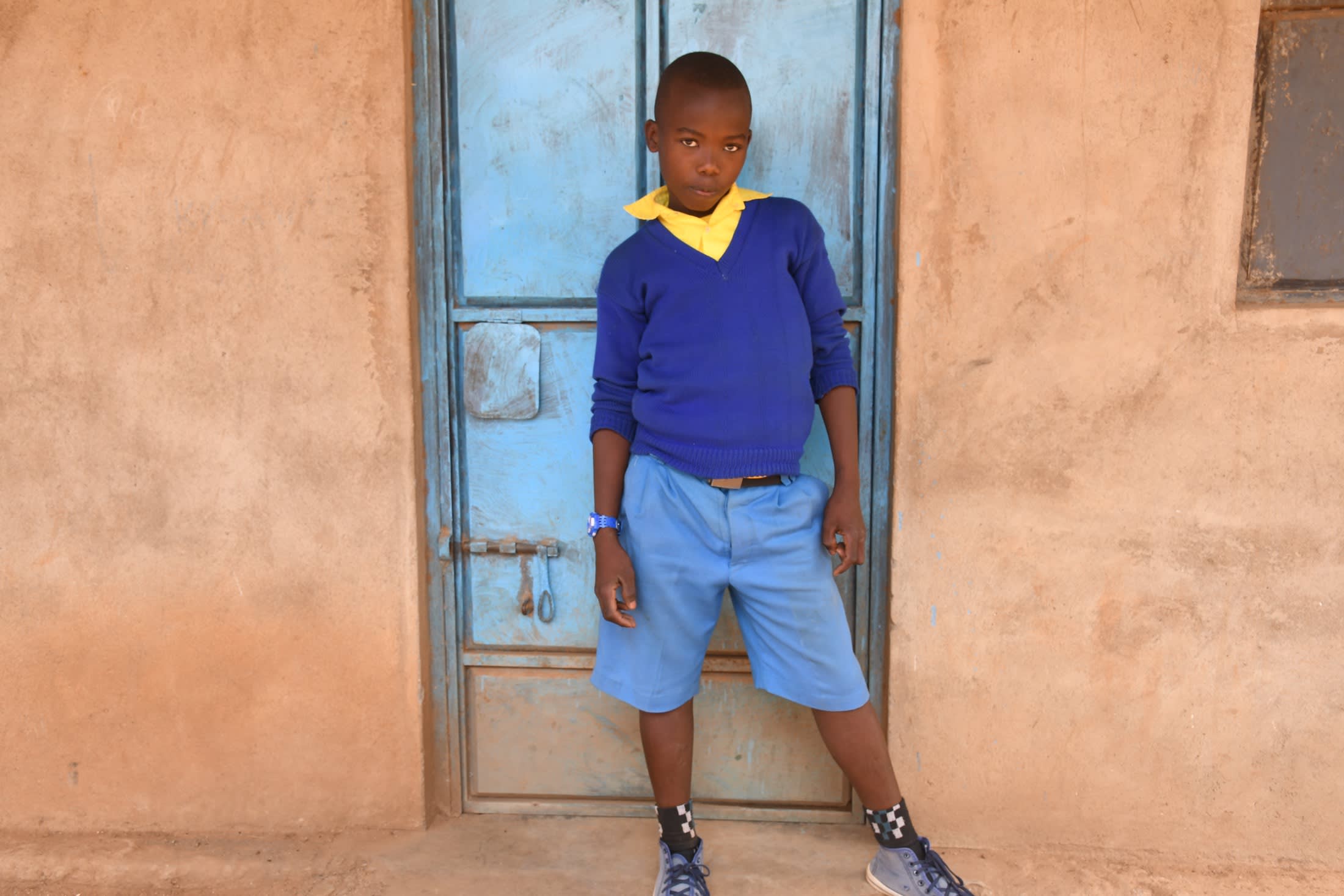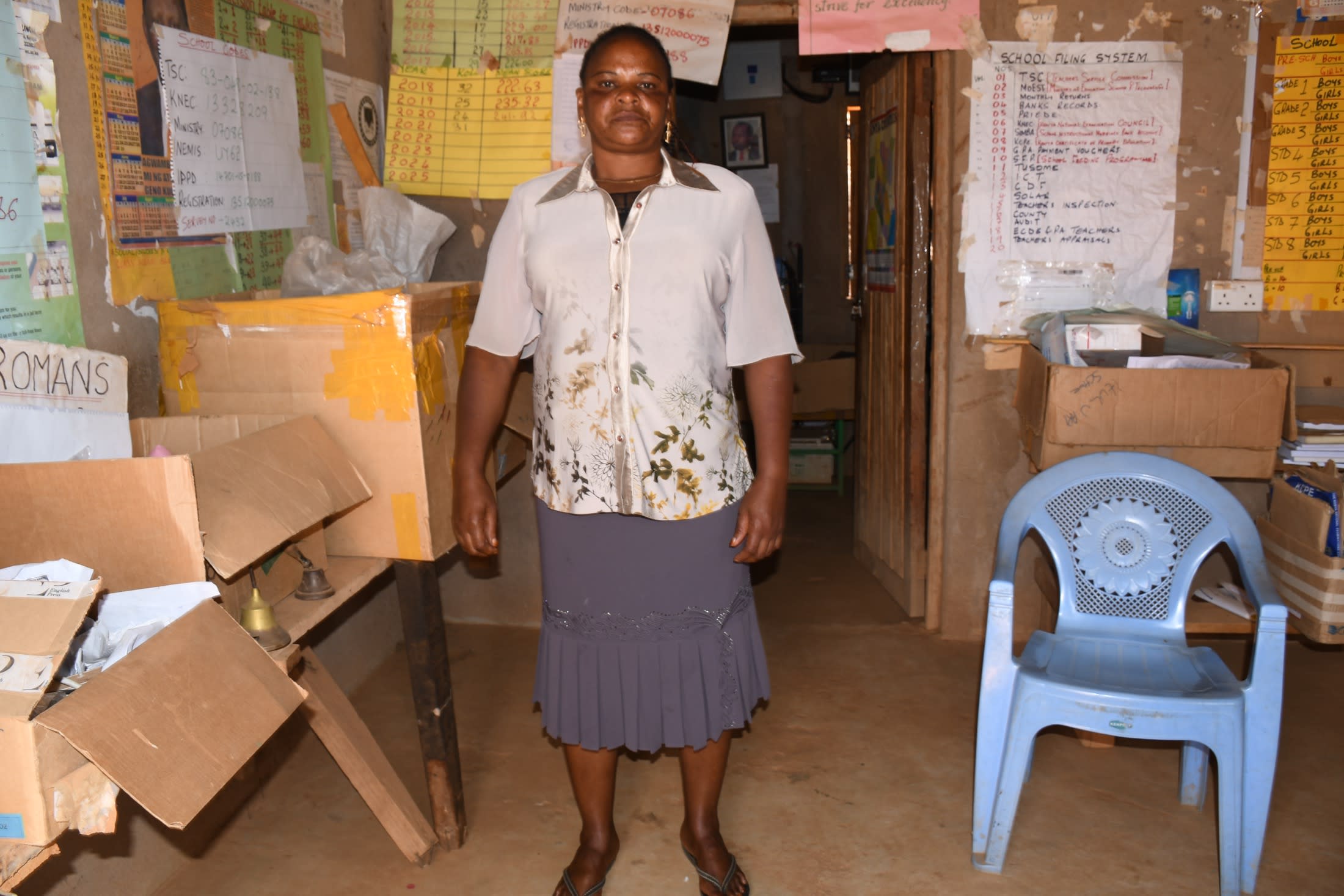It is not surprising that the 244 students attending Tii Primary School in Kenya cannot concentrate. They walk several kilometers to collect water from a dug hole and carry it to their school every morning when their small rain tanks on the school campus run dry. It is more challenging when they do not even have enough water to drink after arriving from their long, arduous journey.

"I have to walk four kilometers (2.48 miles) carrying water to school when the rainwater tanks in the school dry, which leaves me exhausted, and I have a difficult time focusing on my studies. We rarely clean the latrines and classrooms, which further affects learning, especially due to foul smells coming from the toilets. At times, I develop stomach upsets because of consuming the untreated water from the tanks and scoop holes," said Caleb M., (in the photo above) 13.
The water scarcity in the area presents several issues for the school and the students. After students bring the first containers of water early in the day, their parents bring more water later in the day, so students and staff have water to drink and cook. Although parents have the task of bringing drinking water to school, some fail to do so, leading to quarrels amongst the parents.
Students sometimes choose to stay home because of the lack of drinking water and the exhaustion of carrying jerry cans full of water. They also often complain of stomach upset and diarrhea, and suffer from water-related illnesses such as typhoid and amoeba because of drinking dirty water from the current water source. Of course, in the long run, their academic success suffers.

Joyce Kilonzo (in the photo above), the senior teacher at the school, commented, "My students arrive in school tired because of carrying water from home, which makes them unable to fully concentrate on their studies. They also become thirsty and cannot quench their thirst, which further reduces their concentration in class. Such situations have led to absenteeism from classes, which also reduces their learning capacity. This has led to poor academic performance because of the challenges associated with the acute water shortage."
Students' health and academic success suffer without a reliable, sufficient water source on their school campus to access clean, safe drinking water. Building a much larger rain tank will ease this burden and enable them to concentrate on learning.
Rain Tank
We will build a 104,000-liter rain tank for this school, making the others look tiny in comparison. Because of how rarely it rains in Southeastern Kenya, this tank's large volume is designed to store as much water as possible during the seasonal rains, making more water available through the dry months. This water will benefit the students, teachers, and supplementary staff.
Parents will mobilize the materials needed for construction, including sand, stones, and water. They will also lend their strength and time to help with the construction. We will complement their materials with a skilled artisan to lead the project in addition to providing the tools, lumber, metal, cement, and gutter system.
As soon as the tank has time to cure, it can begin collecting rainwater for the school's use.
Training
We will train students and staff on sanitation, hygiene, and other topics for 1 day. Those in attendance will form a school health club that will promote good hygiene and sanitation practices both at school and at home. They will learn all of the steps to proper handwashing, how to treat water, and how to keep their environment clean. The school will also be taught how to best oversee and maintain their new rain tank and handwashing stations.
Handwashing Stations
A total of 3 handwashing stations will be installed upon the project's completion and before training. These are 1,000-liter plastic tanks fitted with 3 taps each, allowing 9 students to wash their hands at once. The student health club and school management will be responsible for making sure the tanks are filled with water and that a cleaning agent such as soap or ash is always available.

 Rainwater Catchment
Rainwater Catchment
 Rehabilitation Project
Rehabilitation Project

































